This year’s Annecy festival showcases a wonderful collection of animated shorts from talented artists around the world. Here’s a brief sampler of the projects in the Official Competition section:
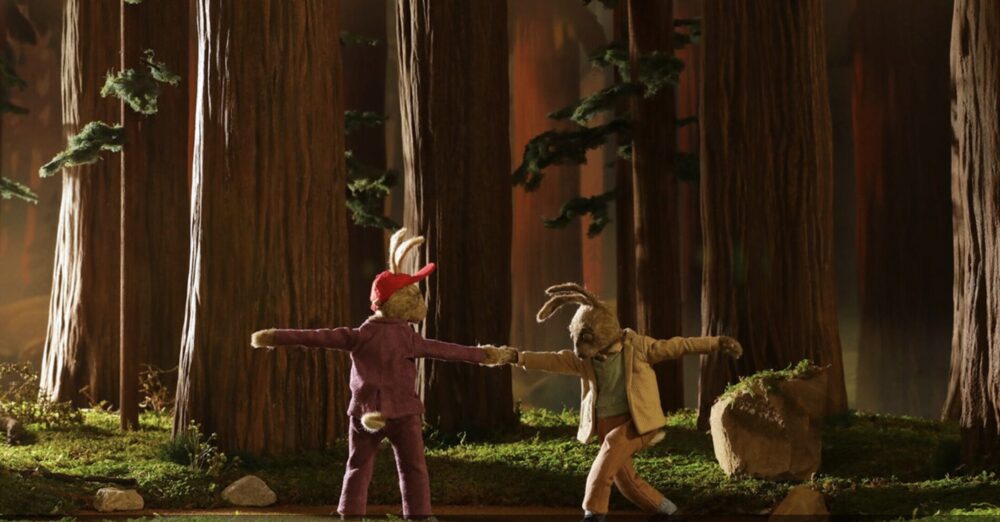
Tennis, Oranges
Directed by Sean Pecknold (U.S.)
A bored robotic vacuum cleaner finds a rewarding friendship with a rabbit in Sean Pecknold’s memorable short, Tennis, Oranges. The director, who is best known for his acclaimed music videos for the band Fleet Foxes, had previously been working with his team at his Sing-Sing studio on the Netflix stop-motion series Song Exploder, along with production designer Adi Goodrich and art director Emily France, and just wanted to repeat the wonderful experience of working with the team on a stop-motion short.
“The inspiration came from the time myself and my partner, Adi Goodrich, spent at our first animation studio in L.A. on Chung King Road in Chinatown,” he recalls. “We moved to a different neighborhood in 2019, but the magic of that street and the friends we met there stayed with us and we both wanted to make a film inspired by that street. The story is rather simple, but it allowed me to explore some of the themes that were emerging during the pandemic: loneliness, a need for community and finding peace in the uncertainty of life.”
“There were many times over the production when the footage we had animated was just sitting on a hard drive,” Pecknold points out. “And we had every logical reason to give up on it. With that distance, my original impulse to make it begins to fade. But then, the animated shots on the hard drive start to whisper to you. Then a little louder, then louder, and it’s saying, ‘I’m incomplete and lonely … You must finish what you have started so I can see the light of day!’”
Pecknold hopes his short will change the way people look at their robotic vacuums! He says, “I also hope they feel a warmth from our story and the way we created it. Or even if it’s a feeling of sadness, I hope it’s bittersweet. I also hope people will see what we made, take from it whatever they enjoyed and be inspired to make something of their own!”
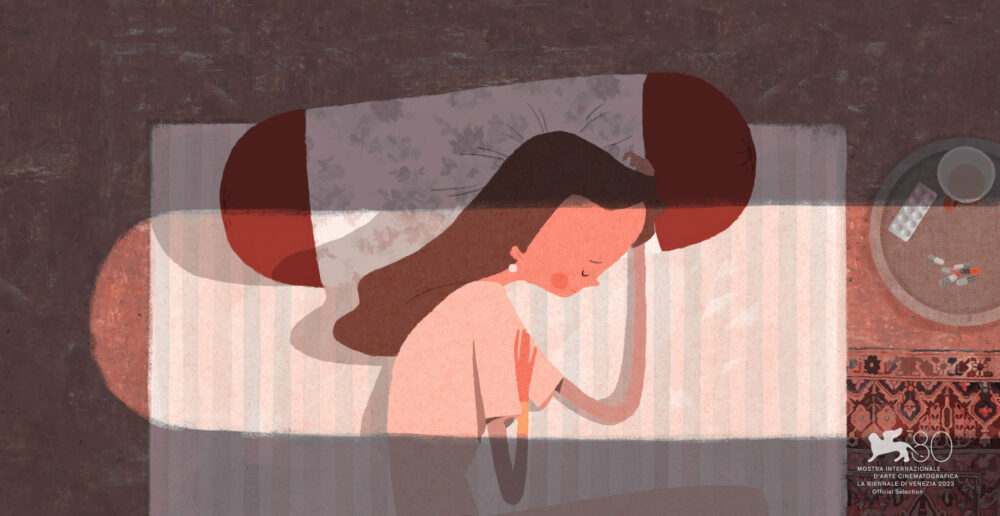
In the Shadow of the Cypress
Directed by Shirin Sohani & Hossein Molayemi (Iran)
Iranian directors Shirin Sohani and Hossein Molayemi began work on their follow-up work to Run Rostam Run about six years ago. “Both of us had personal life experiences that had deeply influenced our lives, and those were the main inspiration for the film,” the filmmakers tell Animation Magazine in an email interview. “In addition, there are many Iran-Iraq war veterans living in Iran who served as significant sources of inspiration for our work. Last but not least, the broader range of life experiences in Iran during the past 45 years made a big impact on the creation of our film.”
The poignant 2D-animated film was a labor of love for the duo. “In practice, the majority of tasks were handled by three of us: the directors and one of the animators, Azad Maroufi, who worked closely with us from the initial stages of production until the final stages.”
Molayemi and Sohani point out that they are proud of the fact that they were able to bring the harsh lives of Iranian veterans with PTSD to the world’s attention with their short. “We’re very pleased that we persevered and managed to accomplish the nearly impossible task of creating such a significant production in Iran, despite our low budget, a shortage of skilled artists and a variety of other issues we have to deal with in our country.”
The filmmakers note that producing animation in Iran under the bleak economic conditions and social crises of the past seven years has led to high levels of pressure, depression and hopelessness among artists. “It is difficult to fully convey the extent of the challenges we face. The reality is far more complex and demanding than what words can express,” they explain. “Creating animation in Iran under the current circumstances is extremely challenging. For over four decades, Iranians have been suffering from economic issues, but the economic and social crisis of the past seven years has led to high levels of pressure, depression and a sense of hopelessness among artists. Additionally, many skilled artists have been forced to immigrate due to these difficult condition.”
Nevertheless, they hope that their short will inspire audiences around the world. They add, “We didn’t intend to impose any specific ideas or evoke particular feelings. Instead, we aimed to share our deep emotions with the viewers, hoping to establish a common language that connects with the audience on a profound level.”
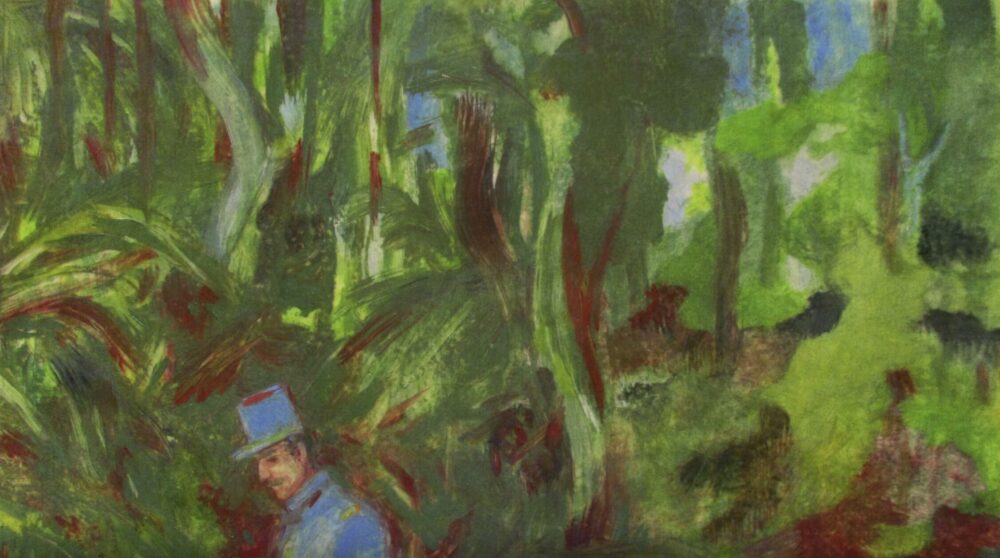
Plus Douce Est la Nuit (Sweeter Is the Night)
Directed by Fabienne Wagenaar (France)
Fabienne Wagenaar’s 15-minute-long short Plus Douce Est La Nuit (Sweeter Is the Night) began its life as a comic book project when the director was a student at the Art Décoratifs school in Strasbourg, France. A few years later, in 2019, she decided to adapt the story into a traditionally animated short. The writing, animatic and research took one year and a half, and the production period was two years long. In the short, a missionary disappears into a small West African harbor as the country is preparing to become independent.
“My inspirations were a wide mix of relationships, memories, books by Frantz Fanon and James Baldwin, exhibits of magnificent, stolen African statues and movies like Coup de Torchon by Bertrand Tavernier, Hyènes by Djibril Diop Mambéty, Tabu by Miguel Gomes, Inxeba by John Trengove and Apocalypse Now of Francis Ford Coppola, as well as French ‘Nabis’ painters like Sérusier, Vuillard, Bonnard and contemporary painters like Peter Doig!”
Wagenaar created the short using oil paint on celluloid. “The background is painted on a transparent celluloid, and the animation is painted on a new celluloid, which is laid directly on the background,” she notes. “Three background designers and six animators worked with me during these two years. My biggest challenge was to evoke in a short time particular trajectories of characters trapped in preconceived ideas in the limbo of ‘great history.’ What I am most pleased (with) is the atmosphere of humidity and heat of the rainforest, which overwhelms our main character. Overall, I hope the audience will be immersed in this turning point of history, which reflects our modern times.”
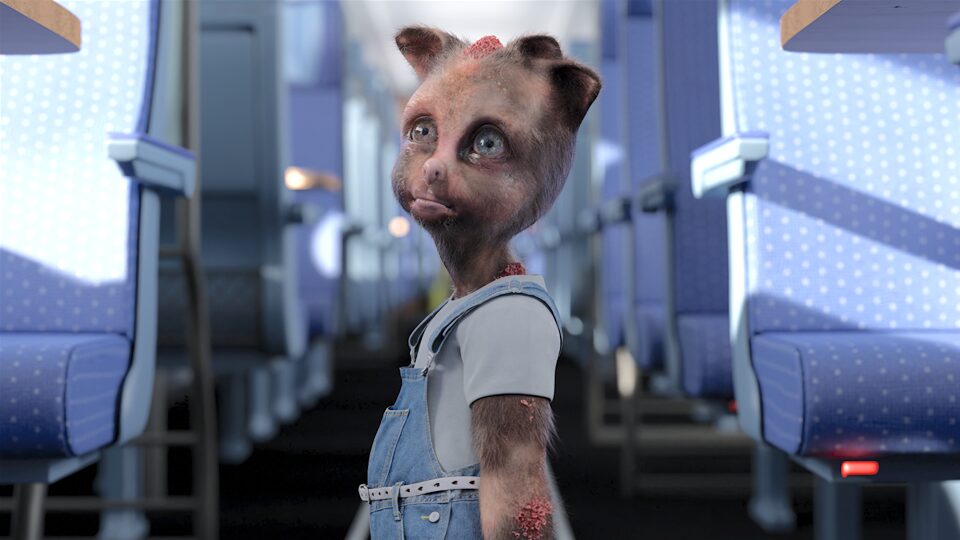
Preoperational Model
Directed by Philip Ullman (Netherlands)
The anthropomorphic characters in Philip Ullman’s Preoperational Model wander through strange worlds, looking for answers and meaning. It’s not surprising, then, that the Swedish artist says his short was inspired by child psychology, role-play and logic.
“The film’s title is taken from the term ‘pre-operational stage,’ a stage of cognitive development where children think at a symbolic level but are not yet using logic,” he explains. “The boundaries between what something is and what it isn’t, as well as the personal individualization, hasn’t fully formed at this stage, and the child often roleplays in order to understand its surroundings.”
It took the director about a year and a half to realize his vision, relying on motion-capture technology (the Xsens MVN Awinda suit) and Blender. However, he says the actual writing of the short was the toughest aspect of the project. “I have no formal training in writing but am trained as a visual artist, so for me to approach narrative is something that’s been very challenging,” he admits. “I approached the writing through emotion and ambience, and sometimes it’s a bit more conceptual. To make the film feel like a whole, as well as for the different scenes to connect but still keep the tension, mystery and emotion throughout the film, was a challenge.”
He mentions such thought-provoking features as Portrait of a Lady on Fire, The Favourite and Boyhood as some of his inspirations, as well as the works of Satoshi Kon, Yoshitoshi Abe, Mamoru Hosoda and Ed Atkins.
As the short finds new audiences in this year’s festivals, he hopes it will make viewers reflect upon the construction of empathy. “It’s something that I try to talk about in my films and something that’s present in the relationship between animals and humans. Through using creatures that exist somewhere between the human and animal, I try to destabilize the viewer’s ability to place the characters and how to relate to them. Hopefully, the viewer will have an experience that makes them question their experiences and projections of other human and nonhuman beings after seeing the film.”
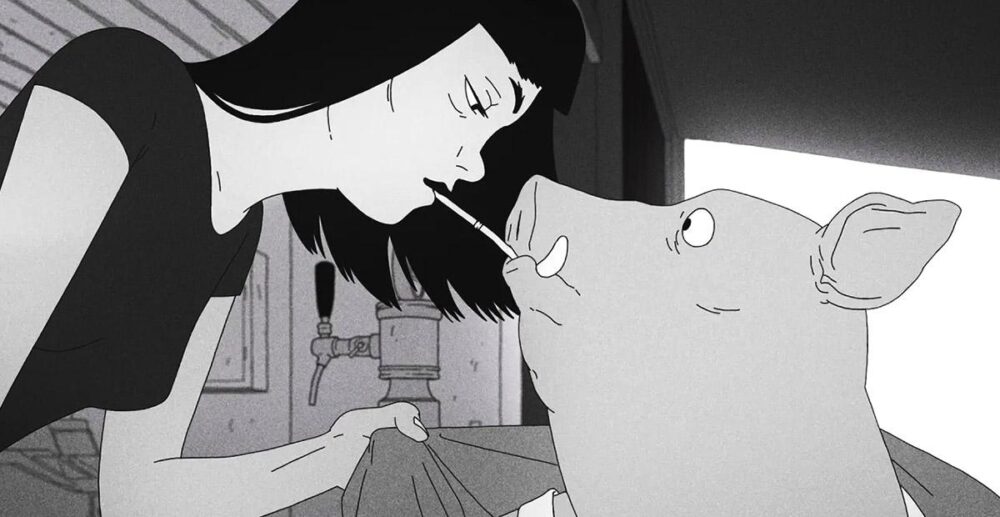
Hurikán
Directed by Jan Saska (Czech Republic, France, Slovakia, Bosnia, Herzegovina)
Eight years ago, Czech artist Jan Saska made a big splash on the festival circuit with his student short, Happy End. This year, he’s back with Hurikán, a comedy about a pig-man who faces many obstacles as he tries to save his favorite beer stand from closure and impress his favorite bartender.
“Hurikán is originally a short comic with the character of the same name,” Saska tells us. “The comic was created in a hurry during the workshop, so I decided to make it easy. I used my recent experience working on a construction site over the summer as inspiration. And to match the environment of the kiosks, beers and fryers, I placed the figure with the pig’s head as a kind of shortcut — I didn’t think too much about it!”
According to Saska, about 60 people rotated through creative positions during the production process. However, he and head of animation/assistant director Marek Pokorný were the core duo behind the short. “The cinematic journey was enriched by the collaboration with producers from four countries — among them, Last Films and Maur film from the Czech Republic, Laïdak Films from France, Artichoke from Slovakia and Aeon Production from Bosnia and Herzegovina,” he adds.
When asked about his idols and influences, he name-checks the likes of Hayao Miyazaki, Katsuhiro Otomo, Satoshi Kon, Mamoru Oshii, Sylvain Chomet, Lucrèce Andreae and Tomek Popakul. He adds, “I consider Popakul’s Acid Rain one of the best and most radical films of the decade, and I think its magic comes exactly from its perfect balance of length and form. Also, the film has a brilliant script and direction, and I think it’s easier to maintain that level of focus on the shorter format.”
Saska says he’ll be pleased if audiences identify with his short’s main character. “I’ll be happy if they experience with him a trip to the post-Soviet Prague of the late ’90s!”
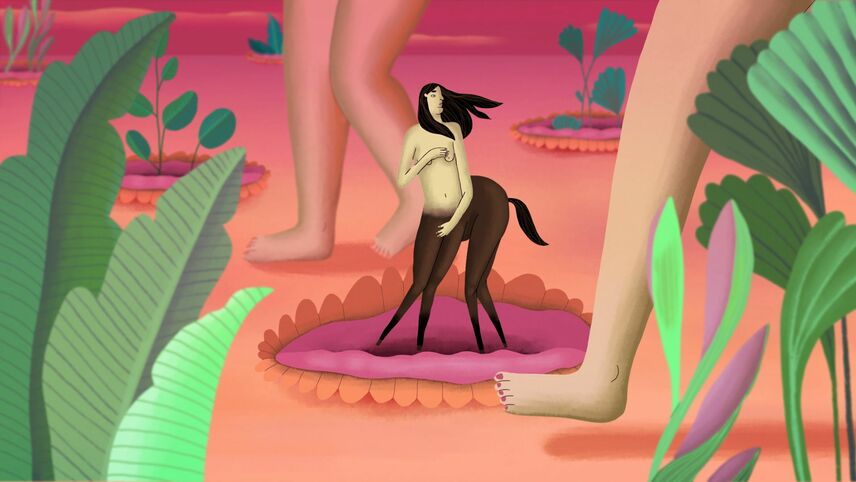
Shoes and Hooves
Directed by Viktória Traub (Hungary)
Never underestimate the creative impact a troubled relationship can have on an artist’s life. Viktória Traub, the director of the acclaimed new short Shoes and Hooves, says an unhappy, dysfunctional relationship led her to a period of creativity that produced her new work.
“The quarantine period coincided with significant changes in my personal life,” she remembers. “I felt it was hopeless to seek harmony and mutual love. The impending COVID restrictions likely influenced my practical decision on how to spend the quarantine period: either independently and alone or in a struggling relationship. I left my previous life, relocated to a small basement flat and pondered relationships and destiny. That’s how I came up with the story of Paula, the centaur girl; Arnold, the crocodile man; and the entire anthropomorphic universe that surrounded them.”
The short was created using 2D, hand-drawn animation with painted textures. “I prefer using customized brushes that provide a natural and realistic feeling,” says Traub. “We collaborated with TVPaint development, allowing us to use the software throughout the animation process.”
“The most enjoyable aspect was unraveling the logic and structure of the animal-human hybrid world,” recalls Traub. “This realm serves not only as the backdrop for a love story but also as a grotesque universe including many tales. I selected one narrative to convey, emphasizing coherence and authenticity in the script, which are always important to me. My primary query was: Could I intertwine the instincts of an animal with the personality of a human and simultaneously convey something deeply personal through their story?”
The filmmaker hopes her unique short causes audiences to think about the relationship between one’s self-esteem issues and emotional connections. “While I previously explored the dynamic of love in my animated short Mermaids and Rhinos and now in Shoes and Hoovers, I find myself with even more questions than before. Ultimately, I believe I’ve learned to ask pertinent questions through the medium of art. This, to me, is the most valuable takeaway from filmmaking.”
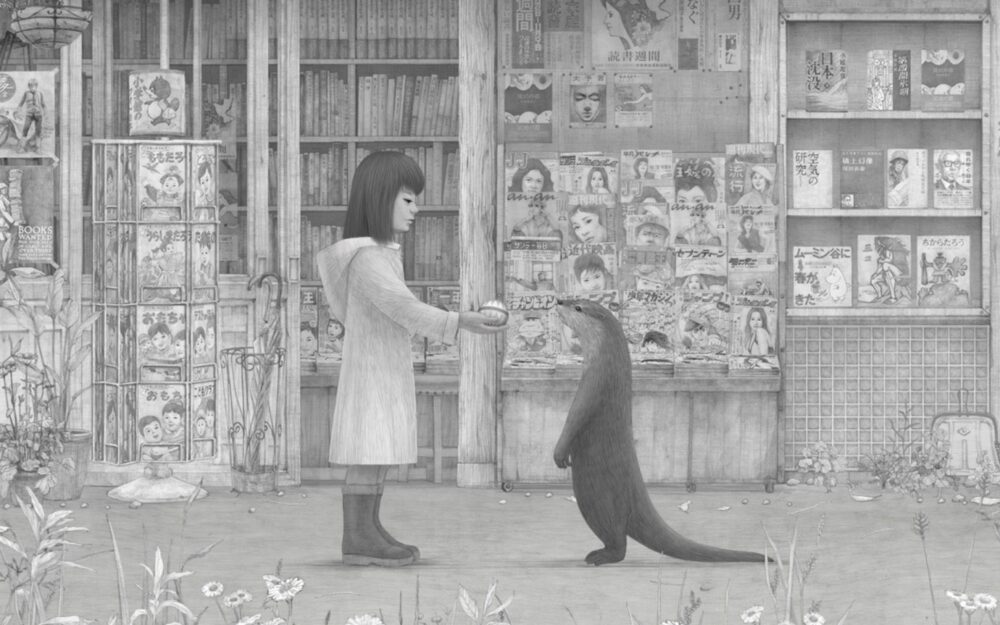
Kawauso
Directed by Akihito Izuhara (Japan)
Japanese director Akihito Izuhara has always been concerned by the terrible impact of human actions on the natural world, and his new short Kawauso is a perfect reflection of his state of mind. The work was inspired by a song about the Japanese otter by vaudevillian singer Soragoro Uwanosuke, which became extinct in 2012. “That’s the theme song for this film,” he shares. “I believe that we should face the problems that developed countries have been facing for a long time since modern times. Especially in Japan, various social distortions have come to light since the Fukushima nuclear power plant accident. One of these is what I call ‘invisible violence,’ and I started working on it by asking myself how I should depict it.”
Izuhara began work on the short in 2005, but production actually began in 2016. “All the landscapes are drawn with pencil on paper,” he explains. “We used Adobe Photoshop, After Effects and Premiere Pro. I work mostly by myself, but some of the drawings are done by a staff of seven.”
“I became interested in film production after watching films by Andrei Tarkovsky and Sergei Parajanov ,” he mentions. “I get a lot of inspiration for my own work from them. I also think it’s very important to find a balance. I love working in the short format because it’s great to be able to control almost everything by myself.”
When asked about his goals for Kawauso, he replies, “I want people to become aware of the various contradictions in the society we live in. In particular, I would like you to think about what countries that are called developed countries have sacrificed to achieve their success.”
And the future? “I don’t know much about the animation industry, but I think the capitalist system itself will change in the future,” he says. “I think that the form and purpose of expression will change accordingly.”
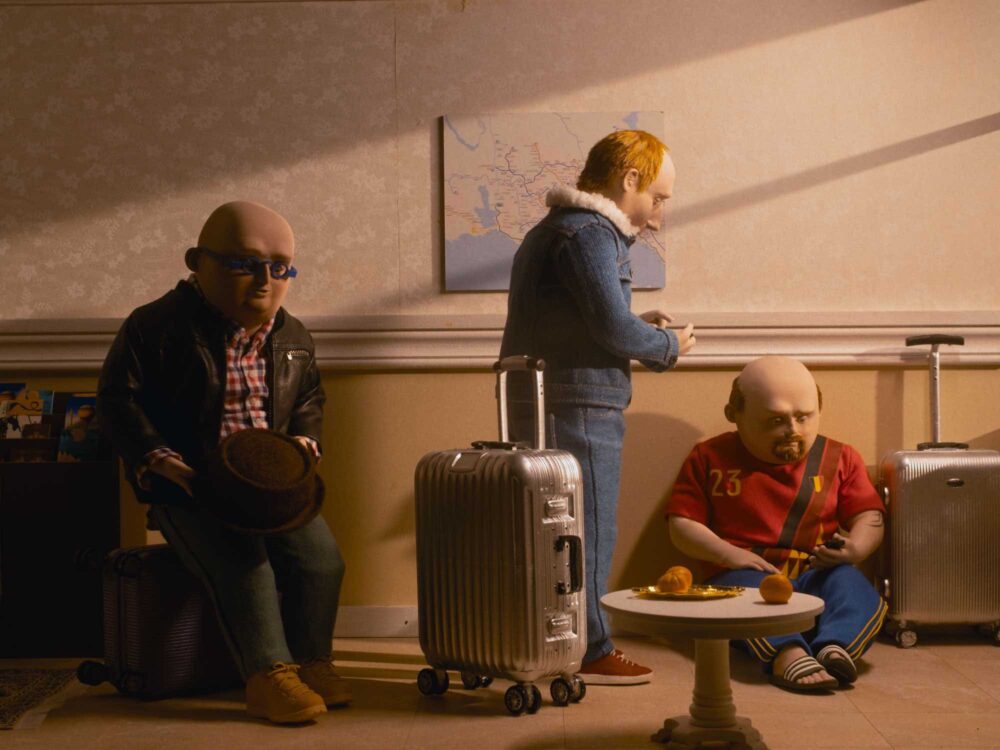
Beautiful Men
Directed by Nicolas Keppens (Belgium, France, Netherlands)
Nicolas Keppens loves the infinite possibilities offered by the medium of animation. “You can really dive deep into the world and create all these details,” he says. “I like making things by hand, and the short format seems close to me to the stories we tell each other each day. To me, a good night with friends is a night where everybody tells some slices of life, each with the potential of a short story.”
Keppens’ memorable new stop-motion short Beautiful Men follows three bald brothers who travel to Turkey to get hair transplants. The Belgian artist, who won the Jury Prize at Annecy in 2021 for his short Easter Eggs, began work on his new short in 2019 when he was a resident at L’Abbaye de Fontevraud in France. “A few months later, we had to go in lockdown, which gave me the possibility to work further on the script and finish Easter Eggs at the same time, as I couldn’t do my day job remotely. We finished the film the spring of 2023 after six months of animation.”
So, how did he come up with the idea for his film? It turns out that he traveled to Istanbul a few years ago for work. “The first morning, while having breakfast in the hotel, the room was filled with bald men who were waiting for their transplant,” Keppens recalls. “Few of them already got the treatment, which is quite a gruesome thing to see. Their heads were all bloody. This was such a tender sight, in a way: These insecure men eating their yogurt in silence as they waited for a cure!”
Besides citing Mike Judge and Masaaki Yuasa as two of his animation idols, he also mentions such independent animation artists as Kirsten Lepore, Flóra Anna Buda, Hugo Covarrubias and Joseph Bennett as sources of inspiration.
Keppens describes his first stop-motion experience as a “very pleasant journey.” “I was very happy with the environment,” he notes. “It’s a whole other way of working than drawing. Our sets would literally come to life by adding light, choosing the right angle and finally seeing the puppets move.”
The filmmaker hopes that Annecy audiences will find the characters featured in Beautiful Men as “human, touching and insecure.” He adds, “I hope the audience experiences a moment with them, just as we experience a moment with our friends as they are sharing these slices of life with us.”
For a complete list of the animated shorts competing in the 2024 edition of the Annecy Intl. Animation Festival, visit annecyfestival.com. Make sure to visit our website every day to get fresh news from the event and on Saturday, June 15, to find out who won the big prizes this year!









 Win a Funko X Lilo & Stitch Prize Pack!
Win a Funko X Lilo & Stitch Prize Pack!

